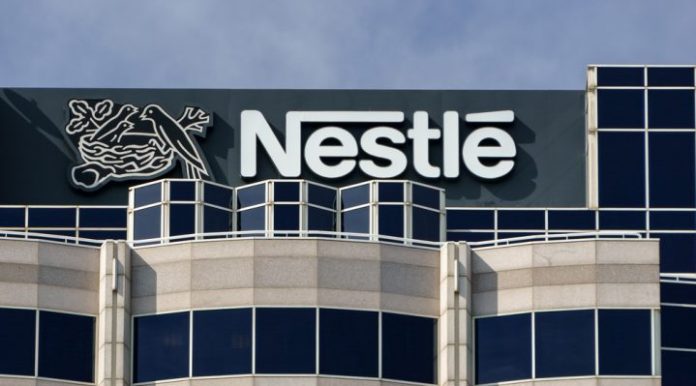This article is written by Vasundhara Thakur pursuing a Diploma in Intellectual Property, Media, and Entertainment Laws from Lawsikho.com.
Table of Contents
Introduction
The fennel flower which is also known as Nigella Sativa and black cumin or Kala jeera is a flowering plant native to southern Europe and Asia, however, now it is cultivated and used worldwide due to its numerous usage and health benefits. Recently it was in the news after Nestlé, the largest food and beverage multinational company based in Switzerland tried to patent it. For a patent to be valid, it needs to be novel, having inventive step/s and must be of industrial use. It would be interesting to find the patent application by Nestlé whether the patent for the extraction of seeds of the fennel flower is a new invention or a mere discovery of nature. This article emphasises the patentability of the fennel flower by Nestlé and concepts of traditional knowledge and patents in this regard.
What is a patent and how can Nestle patent the fennel flower?
A patent is an exclusive right granted to a person who has invented a new and useful article or an improvement of an existing article or a new process of making an article. It consists of an exclusive right to manufacture the new article invented or manufacture an article according to the invented process for a limited period. Section 2 (1) (j) of the Indian Patent Act, 1970 defines invention. Concerning Medicine or drugs and certain classes of chemicals no patent is granted to the substance, even if that is new, however, a process of manufacturing the substance is patentable. The applicant for a patent must be the first inventor or a person who has derived title from them since the right to apply for a patent is assignable. The Applicant must give full disclosure of the invention and specify the precise limits of the monopoly claimed. The invention claimed must be novel and must not be obvious to those who are skilled in the art to which it relates.
Sections 2 (1) (j) and 2 (1) (ja) defines invention and inventive steps under the Indian Patents Act, 1970 according to the sections any product or process will be considered as an invention if it has an inventive step that is not obvious or does not possess any technological advancement in the existing and/or already available traditional knowledge. Thus, it is clear that Nestlé cannot get patent over the fennel flower per se, since it has been in use for a long period of time and has become quite common and known to the public at large which is exactly the opposite of the conditions required to get patent over a product or a process.
Traditional knowledge
Traditional knowledge is knowledge and skill passed on from one generation to another or within a community forming a part of their cultural or spiritual identity. Although there is no specified definition of traditional knowledge internationally, it has defined in a general sense as knowledge and cultural expression that includes distinctive signs and symbols and in the narrow sense, it refers to intellectual knowledge that comes from intellectual activity in a traditional context, that includes know-how, practices, skills, and innovations as in agricultural, scientific, technical, ecological, medicinal and biodiversity knowledge.
In modern times the fennel flower is used and cultivated worldwide, however, its use can trace back to ancient times where it was used and associated with various cultural norms. The seeds of the Fennel flower also known as kala jeera(black cumin) and/or kalonji are customarily being used to enhance the food flavour as well as for medicinal purposes since the ancient ages and are now becoming part of the culture of India, Afghanistan, Italy, Middle East, Egypt, and China. In ancient Egypt it was used as food and medicine, while it was considered as a snakebite remedy in ancient China, it was hung over doorways to drive away evil spirits in the Middle East and it is also associated with the origin of the marathon.
Considering these traditional usages of fennel flower by various cultures, it comes under the purview of traditional knowledge and makes it common and known to the public at large in contrary to the condition specified for granting a patent i.e. novelty.
What was covered by Nestlé in its patent application?
Nestlé filed the patent application regarding the specific way that can be used to extract thymoquinone, a natural compound of the fennel flower, and to protect the findings of research on the interactions between thymoquinone, or similar compounds, and the body’s receptors and how this interaction can help reduce allergic reactions to foods and the use of compositions that provide molecules that stimulate these receptors.
Did Nestle try to patent the fennel flower?
SumofUs a non-profit organization published an online petition in April 2013 that Nestlé is trying to patent Nigella sativa or the fennel flower, known for its healing effects for curbing cancer, helps in alleviating asthma, and reliefs from pain. It was further stated in the petition that Nestle was trying to take control of this natural cure by preventing others from its usage while making a profit from the fennel flower that has been used for centuries in many households or as a homoeopathic remedy. It was further contended that Nestlé has fabricated the idea that it has discovered that fennel flower could be employed to alleviate food allergies while it has been in practice for thousands of years. They also affirm that Nestlé is attempting to gain a monopoly over the fennel flower that will grant them the power to sue anyone who would use it without the prior permission of Nestlé and instead of making an artificial substitute or making the remedy easily accessible and available to all nestle is looking to make a fortune out of it by turning it into some costly private drug. While some users on the MetaBunk forum have challenged the facts made by SumofUs in its petition they point out that the site has raised some important questions regarding the actions of the multinational corporations.
Counterclaiming the averments made by SumofUs, Nestlé on its official website has clearly stated that it never intended to ‘own’ or tried to get a patent on the fennel flower. The patent claim was entirely based on the discovery by their scientists that thymoquinone found in the seeds of fennel flower stimulates specific receptors in the body that prevent food allergies. Although the patent wasn’t granted to them and now they are not pursuing it. However, even if the patent would have been granted to us that would not have prevented the use of fennel flower by any individual or entities for any purpose be it traditional or natural remedies. Nestlé stated that they believe in fair access and benefit-sharing of the raw materials, as described in the Convention on Biological Diversity of 1992 and Nagoya Protocol of 2010. Further stating that “the fennel flower is a natural species and nobody could or should benefit from its ownership”.
After this debate people started to question the patentability of natural elements and the role of intellectual property protection in such cases. Clearing this the Supreme Court of the United States in Molecular Pathology v. Myriad Genetics stated that “human DNA cannot be patented in its innate form because it is a product of nature. However, synthetic or artificial DNA made by humans could be patented”.
Similar instances where patent application was rejected
A patent application was filed by the applicant for their invention titled “Process for the production of recombinant proteins using carnivorous plants”. In the said application the applicant claimed that carnivorous plants can be used as a medium for protein production and the process that involved can genetically modify plants by transformation and protein was expressed in the digestive secretion of the genetically modified plant, hence, the invention concerns to collect an exogenous recombinant protein produced by the plant and not to the cultivation of plants. “The plant is subjected to chemical and optionally mechanical stimuli mimicking the capture of a prey and inducing activation of the system producing and secreting proteins by the said plant into traps, which does not form part of usual methods to culture plants and does not relate to agricultural methods”.
The Indian Patent Officer rejected the application stating that this invention has the potential to commercially exploit the carnivorous or insectivorous plants, that comprises the cultivation of the plant, inducement of the plant by chemical and mechanical stimuli for secretion of recombinant protein in traps. Further stating that the cultivation of the carnivorous plant used in a process according to the invention is carried out conventionally, taking into account the special features of the selected type of carnivorous plant. The methods of cultivation of the different types of carnivorous plants are well known to those working in the field. Therefore, this application was refused under Section 15 of the Patents Act, 1970 based on the grounds of Section 3(j) and Section 3(h) of the Act.
It can be concluded from the above-mentioned patent application that any invention like Nestle’s in fennel flower extraction case, if there are traditional or alternative and known process is available and anyone tries to monopolise a method for the sole purpose of commercial benefit, then such inventions could deprive the general public of the use of a natural product that is available naturally without causing any further damage to the natural habitats.
Conclusion
From the above discussion, it can be concluded that the fennel flower is a natural substance that has been known for thousands of years and has been used by many in various parts of the world. The researchers found numerous benefits to mitigate allergies through the use of fennel flower seeds, including respiratory allergies. Though patents are given for new inventions and discoveries it is pertinent to note that the known elements like thymoquinone, the compound found in the fennel flower are extracted even before any other inventions and its benefits and usage are known worldwide. Nestlé cannot patent the fennel flower itself, however, if it discovers something new like an invention to grow seeds of fennel flowers or any other discoveries which are unknown to the common public, Nestle can seek patent over such discoveries. The claim by Nestlé that it has discovered specific ways in which the body’s opioid receptor interacts with thymoquinone to reduce food allergies might seem like a new discovery, however, unknown the reason behind such reaction, we cannot disregard the usage that has been in use in many countries using it for such kind of health benefits.
References
- https://www.nestle.com/ask-nestle/environment/answers/is-nestle-trying-to-patent-fennel-flower-nigella-sativa
- https://www.mandourlaw.com/blog/nestle-seeks-patent-over-fennel-flower-plant-stirs-up-controversy/
- https://www.abc.net.au/radionational/programs/archived/bushtelegraph/fennel-seed-plant-patent/5161168
- https://actions.sumofus.org/a/nestle-nigella-sativa
- https://pure-liyoga.com/nestle-stop-trying-patent-fennel-flower/
- https://www.business-standard.com/article/companies/nestle-s-cumin-extract-patent-bid-raises-hackles-114010700965_1.html
- https://www.ibtimes.co.uk/petition-stop-nestle-patenting-fennel-flower-goes-viral-facebook-1470491
- https://spicyip.com/2014/01/guest-post-is-nestle-seeking-a-patent-over-an-indian-home-remedy.html
- https://www.nestle-cwa.com/en/environmental-sustainability/respecting-biodiversity
- https://ipindiaservices.gov.in/PatentSearch/PatentSearch/ViewDocuments
Students of Lawsikho courses regularly produce writing assignments and work on practical exercises as a part of their coursework and develop themselves in real-life practical skills.
LawSikho has created a telegram group for exchanging legal knowledge, referrals, and various opportunities. You can click on this link and join:
 Serato DJ Crack 2025Serato DJ PRO Crack
Serato DJ Crack 2025Serato DJ PRO Crack











 Allow notifications
Allow notifications



